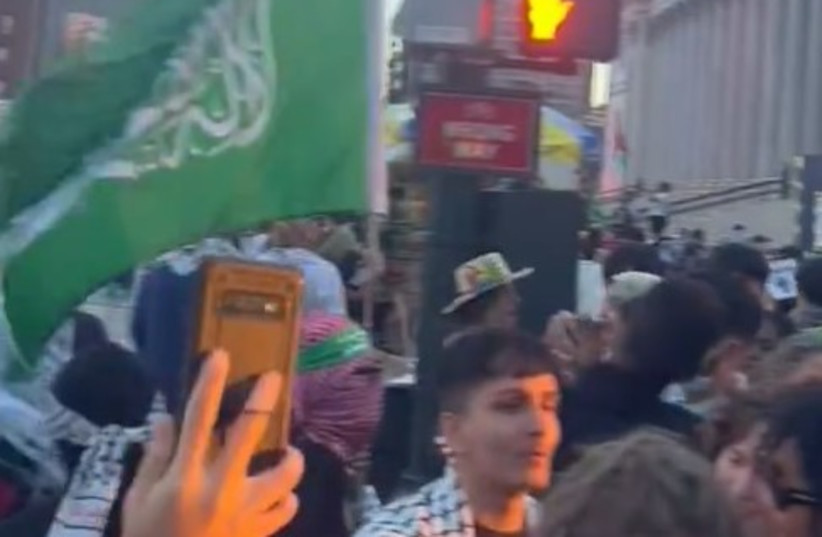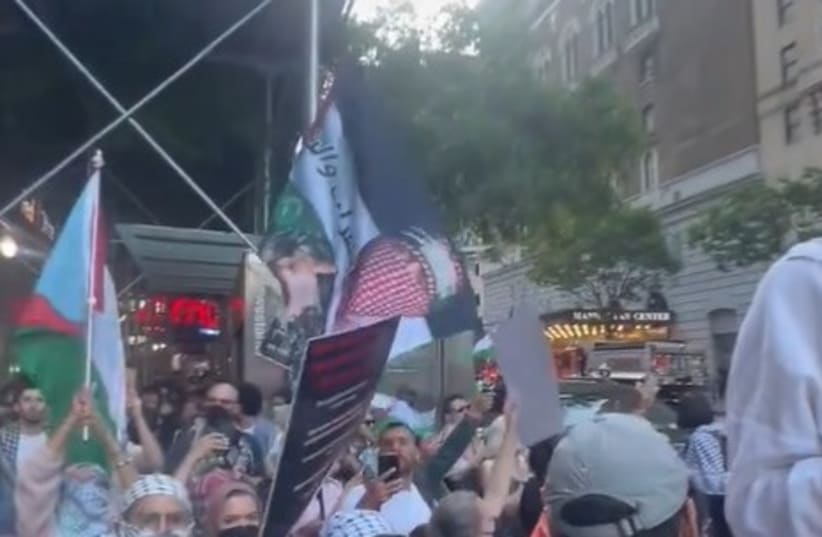Since protests erupted against Israel and in support of Palestinians after the October 7 massacre and Israel’s prosecution of its war against Hamas, writers and journalists have grappled with how to accurately and fairly describe protests.
Israel-Hamas war protests have variously been described as protests against Israel’s war, Pro-Palestinian protests, anti-Israel protests, and more controversially, pro-Hamas protests. Journalists and commentators have been especially hesitant to describe a protest as “pro-Hamas” because it is a grave charge and definitively ascribes a belief to the protesters that they may not necessarily share.While rallies in the immediate aftermath of October 7 would be fairly described as pro-terrorism, protests since Israel responded in force have ostensibly presented themselves as pro-ceasefire and against a supposed genocide in Gaza. The humanitarian cloak, be it a cunning guise or misguided naivety, provides a degree of plausible deniability when opponents describe the alignment of these protests as pro-terrorism.A small minority or the underlying belief?
Hundreds of organizations have been involved in the protests, representing a rainbow of ideological beliefs. Even at protests in which there were some activists who professed affinity and support for Hamas, such as those at Columbia University in April, it could be argued that they were individuals and outside instigators who did not represent the whole group and organizers.
Few groups readily state a policy of support for terrorists, hiding behind the ambiguous term “resistance.” Yet declared policy is not the only way in which organizations are judged. Action is far more important than their stated goal. It is reasonable to characterize a group according to the practices that it tolerates among its activists and leaders.


Within Our Lifetime (WOL), which primarily operates in New York, offers an example of how a clear pattern of behavior indicates that its protests are pro-Hamas. One factor to take into account is whether support for terrorism is a repeated occurrence – which decreases the likelihood that an outside instigator or rogue faction is involved.
One waving of a terrorist flag could be explained, but the latest WOL protest on Friday in which multiple Hamas and Hezbollah flags were present was one of many such incidents. At a June 10 WOL protest of the Nova Music Festival Exhibit, Hamas, Hezbollah, and a “long live October 7” banner were displayed.
Another indicator of pro-Hamas sentiment is the acceptance of pro-Hamas behavior among the group. WOL activists without the terrorist paraphernalia seem perfectly comfortable to be seen next to terrorist symbols and banners. The flags have not been hidden among the crowd, but flutter proudly at the front of marches and at the center of podiums.
The behavior of a group’s leadership toward its activists’ behavior also reveals whether a practice is accepted or supported by a group. WOL’s leadership has repeatedly been pictured with such terrorist materials. On Friday, the group's leader Nerdeen Kiswani led chants next to a banner of Hamas Izz ad-Din al-Qassam Brigades spokesperson Abu Obaida. On April 15, WOL released a video of Kiswani with a Hezbollah flag just behind her. Another organizer, Abdullah Akl, led chants calling on Abu Obaida to "Strike, Strike Tel Aviv."While a group may not explicitly state support of a terrorist organization, silence about the proclivities of its activists speaks loudly. If an organization like WOL fails to repudiate repeated instances of Hamas and terrorism support at its events, then it is tacitly approving the practice.
Within Our Lifetime, through repeated occurrences of terrorist support, general acceptance by both activists and leadership, and failure of the organization to reject the practice, can be reasonably described as pro-Hamas and pro-terrorism. Any demonstration involving WOL should therefore be regarded as a pro-Hamas protest. After much observation of the generally accepted practice of anti-Israel groups, this reporter says even the most cautious of journalists and commentators should feel comfortable applying the pro-Hamas label when relevant.
